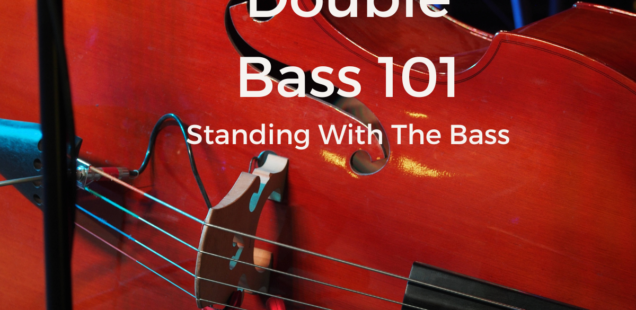
Double Bass 101: Standing With The Bass
Developing a comfortable stance while playing the bass can take some practice for beginning bass students. Students can run into issues like resting the bass on their shoulder and finding a comfortable position with the bass.
In this post, I’ll walk through how to help students achieve a comfortable stance when playing the bass.
Endpin Height
First, set the bass at an appropriate height.
The height of the bass is a personal preference. I generally tell my students that the nut of the bass should be approximately eye to eyebrow level. This is a general rule of thumb. I’d suggest starting here and adjusting as necessary. This will place the left arm at a comfortable position when playing in the lower positions of the bass and allow you to access the upper register easily as well.
Standing with the Bass
Second, stand in a comfortable position with feet roughly shoulder width apart.
It can be helpful to bend slightly at the knees to connect your feet to the ground. I like to give the analogy of a sports athlete ready and at attention on the field. Playing the bass engages the whole body so I want my students to understand the physical aspects of playing the bass.
Next, hold the bass at the neck block with your left arm stretched out in front of you and the bass turned at a roughly 45 degree angle.
Bring the bass toward you and rest it on your belt buckle and left hip. The lower bout of the bass rests against the left leg. The bass should be turned at a 45 degree angle with the left leg behind the bass.
Try giving the bass a hug with your arms wrapped around it as well as bending at the waist and putting your fingers on the bridge to check your position and comfort level.
Check that the nut is around eye or eye brow level. Adjust the height of the endpin as needed.
Avoid the bass resting on your belly which can limit mobility and playability on the bass. Another common problem that happens in this position is that when bowing the E string the bow can have a tendency to hit the right leg.
Conclusion
Use these tips as a general guide for achieving a comfortable stance. Every player is different and adjustments should be made based on the bass player.